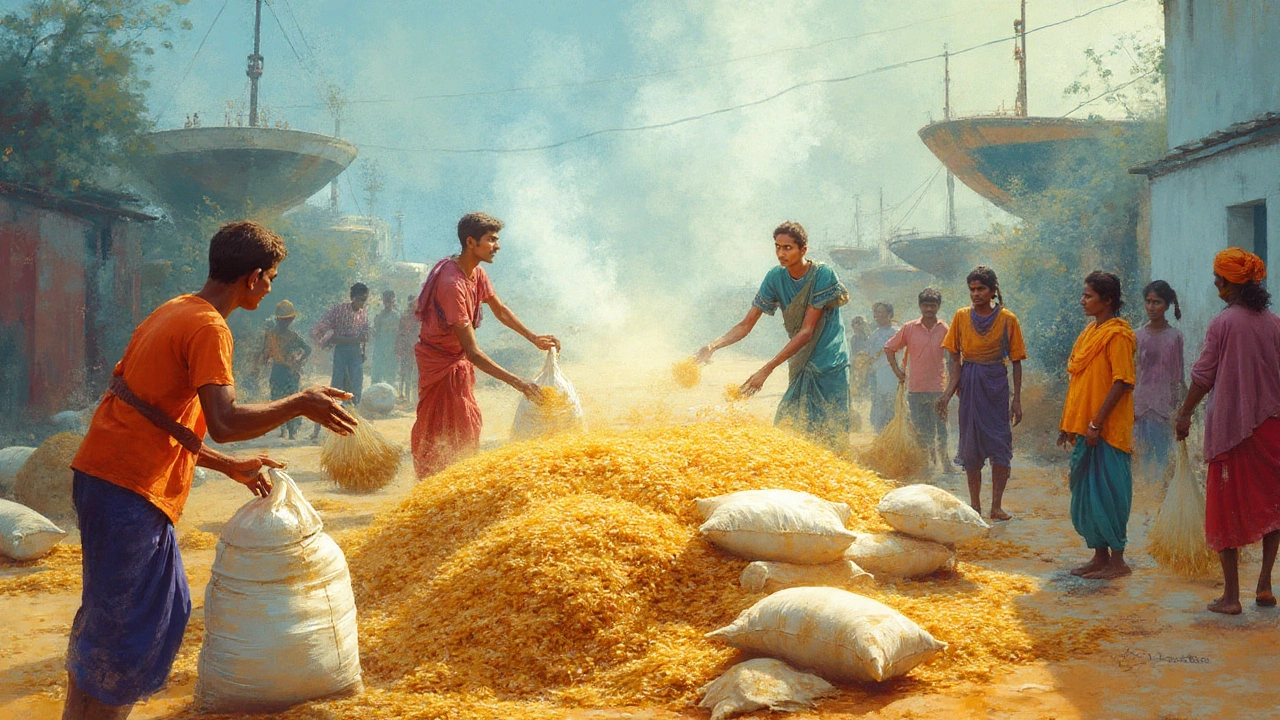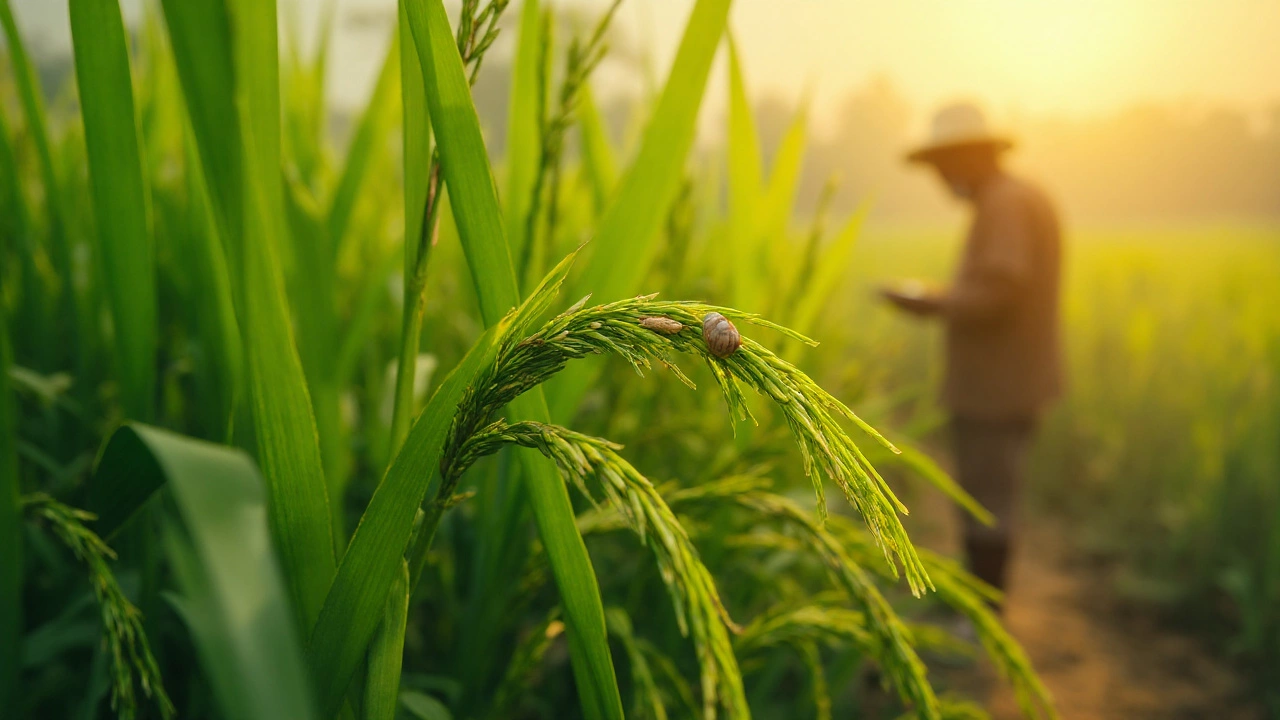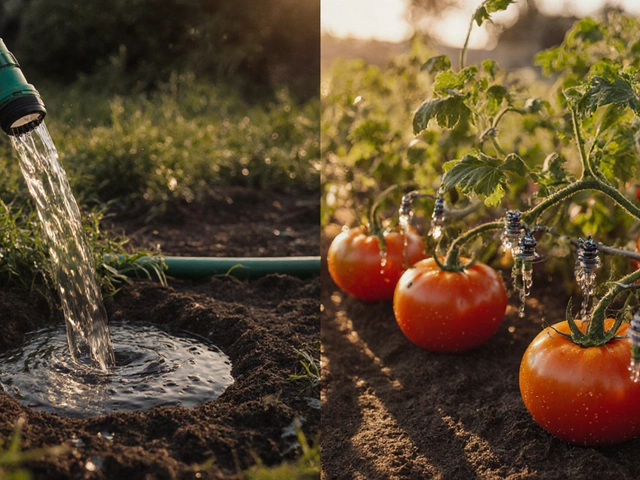It looks so simple: rice fields stretching out green and serene, bags of polished grains piling up in storage sheds, bowls of fluffy rice feeding half the world. Turns out, the reality of running a rice business is a high-wire act. Small hiccups? Those don’t exist. One storm, a supply glitch, or a currency tumble, and thousands of dollars can vanish overnight. If you’ve always pictured the rice trade as steady and reliable, take another look. Let’s pull back the curtain and see what really makes or breaks this industry.
The Hidden Pitfalls in Rice Business Operations
Every year, New Zealand alone imports roughly 50,000 metric tons of rice—mainly because our soil and climate aren’t ideal for large-scale local growth. Globally, over 750 million tonnes are produced annually across 120 countries. Sounds massive, right? But behind these numbers, even experienced farmers and traders regularly get blindsided. Weather might top the list. Rice is finicky—just the right water balance, perfect timing for sun and rain, and zero surprise cold snaps. Too little rain in Indonesia? Crop failures spike. A cyclone in Myanmar? Exports are trashed, rippling through Asian and international markets. And insurance? It’s rarely enough. Only about 14% of rice farmers worldwide have any meaningful crop insurance—as reported by the Food and Agriculture Organization. The rest pray they won’t watch a year’s work rot in flooded fields.
Pests and diseases bring more headaches. Rice blast fungus, brown planthopper outbreaks, stem borers—if these sound arcane, talk to any Southeast Asian grower after an outbreak decimates yield. The International Rice Research Institute once found that, in a bad year, pests and disease alone could wipe out over 30% of the average rice crop in parts of the Philippines. At the same time, misusing pesticides brings stricter import bans, which means lost markets. Farmers are forced to gamble: spray enough and get shut out, or spray less and risk a swarm. Either way, profit margins shrink fast.
Finances get equally tricky. Upfront costs—seed, fertilizer, machinery, labor—often demand sizable loans. But paying them back is a minefield. In 2023, when international rice prices shot up by 38% after India restricted exports, well-prepared business owners made a windfall. But many others, locked into pre-existing, low-price contracts, actually lost money as global demand left shelves empty in local stores. Suddenly, even established companies like Thailand’s CP Group rushed to renegotiate their purchase deals as prices swung out of control. Those with too much unsold stock got hammered, while opportunists who could pivot to higher-priced markets rushed in for quick profits. If you’re running low on working capital, you can’t play that game—you’re stuck selling low and buying high.
Let’s talk labor. In parts of Vietnam, a top rice exporter, more than 60% of the field workforce is over 55 years old, according to reports from 2024. Younger workers often leave, searching for less backbreaking urban jobs. So, businesses struggle to find reliable hands to plant, weed, and harvest the fields on time. Delays mean missing the critical harvest window, which can drop yields dramatically. And in places without mechanization—where labor is pricier or less skilled—this turns into a logistical nightmare, not just a staffing problem.
Finally, you have technology gaps. Efficient post-harvest storage, improved seeds, water management systems—they all promise better margins. But the up-front cost can scare away new ventures or smallholders. One study in Bangladesh showed rice farmers using simple moisture meters to check grain humidity lost 17% less rice to mold or spoilage during storage. It’s a basic upgrade, but many in the industry skip these steps, bleeding profits bit by bit in avoidable losses.

Market Volatility and the Maze of International Trade
So you’ve managed to grow the rice, dodge the pests, keep the staff, and harvest just in time. Here’s where things can get even weirder—global market swings. Rice isn’t like gold or oil, but its prices change fast and hard. If you’re trading internationally, you’re at the mercy of currency changes, political decisions, and shifting diets across continents. Look at 2023: after India imposed restrictions on exports, global prices for some types of rice soared to their highest in nearly 15 years. Not only did restaurants here in Auckland start paying double for basmati, but countries like the Philippines scrambled to secure enough rice, setting off a bidding frenzy in Asia. Small traders who couldn’t lock in stock fast got pushed aside by big importers with deep pockets.
Here’s something else: rice isn’t just rice. There are hundreds of varieties, all commanding different prices on the world market. Jasmine from Thailand, basmati from India and Pakistan, short grain from Japan—each attracts its own buyers. Markets can turn on taste trends, food scares, or even celebrity chefs touting a rare variety. If you’ve hitched your business to one type and trends shift, you’re stuck holding bags of unsellable grain while competitors clean up on the new favorite. Diversification isn’t just a buzzword; it’s a survival trick. Otherwise, you’re left hoping your chosen rice will still have a market when your shipments arrive.
There’s also the complex paperwork. Exporting rice, especially to places like the EU, involves strict testing for pesticide residues, plant diseases, and even heavy metal content. Just three years ago, a shipment from Vietnam got rejected at the Port of Rotterdam because it slightly exceeded authorized levels of tricyclazole, a fungicide. That’s a six-figure loss with nowhere to send the goods but the animal feed lot—at a fraction of the value. Regulations change fast, and if you don’t update your standards every season, border officials can drop the hammer on your whole shipment.
Transport brings its own bottlenecks. Shipping containers, customs delays, and logistics breakdowns—all notorious for burning holes in rice traders’ pockets. 2022 saw a global shortage of containers, raising ocean freight prices by over 200% in just a few months. Suddenly, moving rice from Yangon to Cairo ate up all the profit margin a distributor hoped for. Smaller businesses, without long-term freight contracts, often pay through the nose or get bumped to the back of the line during shortages.
You’re also playing against national policies. Governments around the world love to step into the rice market. Sometimes they offer price supports to help local farmers, making your imports suddenly uncompetitive. Or they might slap on tariffs and quotas, killing deals without warning. In 2024, Myanmar’s coup resulted in abrupt export bans, shocking trade partners with empty warehouse shelves and contracts they couldn’t fulfill. The message is clear: the world’s favorite grain can turn into a political football at any moment.
Here’s a quick look at just how wild these market swings can get:
| Year | Major Event | Global Price Change (%) |
|---|---|---|
| 2008 | World food crisis | +75 |
| 2016 | Floods in SE Asia | +22 |
| 2023 | India export ban | +38 |
| 2024 | Political unrest in Myanmar | +15 |
Bottom line? If you’re not watching every weather report, export announcement, and shipping update, things might get ugly quick. The real winners are those who hedge, diversify, and stay nimble—while the rest get swept away.

Clever Risk Management and Survival Tactics
Trouble is, risk never truly disappears—it just gets traded or softened. This is why even the biggest players in the global rice trade invest in clever risk management strategies. Let’s unpack a few ways the savvier folks keep their heads above water.
First up, insurance can help, but you need the right kind. Standard crop insurance policies often don’t cover everything: pests, political bans, or unexpected price swings. Some international traders use what’s called “hedging” in futures markets, locking in today’s price for delivery months later. In 2022, savvy Indian exporters grabbed forward contracts when prices started climbing, pocketing tidy gains even while rivals floundered when the surge hit. If you’re new, talk to financial advisors about these tools—don’t just stick with what your neighbor is doing.
Storage is another smart move. Investing in sealed, temperature-controlled warehouses can mean you don’t need to dump your rice just because a storm or market swing delays a shipment. A cooled warehouse in Central Vietnam reduced post-harvest losses by nearly 25%, according to a report from 2023. Smaller local businesses sometimes get creative by partnering up: sharing storage space, splitting costs, and bulking together for export deals too large for one farm alone. No need to go it alone.
Want to dodge labor issues? Look at mechanization wherever possible. Even renting a combine harvester for a few days can pay off if timed right. In Thailand, farms that mechanized saw labor costs drop by nearly 30%, and harvest delays shrank to almost nothing. Yes, equipment costs are high at first, but local governments sometimes offer low-interest loans for these upgrades. And don’t overlook training programs: skilled workers waste less seed, harvest smarter, and can spot pests before they become an epidemic.
Don’t underestimate the power of partnerships and contract farming. Joining up with bigger exporters, supermarkets, or even restaurant chains who agree to buy your product ahead of time can dramatically reduce the stress of price crashes. In 2024, a group of Auckland grocers formed a co-op to source rice directly from Vietnamese producers, locking in their prices for six months at a go. They weathered last year’s spikes with barely a blip, while solo traders felt the pain.
Use tech to your advantage. Mobile weather alerts, market tracking apps, digital trading platforms—all put you ahead of the curve. It’s no longer about who has the best land; it’s about getting reliable data. A Bangladeshi startup recently helped hundreds of farmers coordinate drying and transport times, raising average profits by 12% just by syncing up to avoid rain and traffic delays. These small tech tweaks often separate the winners from the washed out.
Knowing the rules is half the game. Stay glued to policy updates from future buyer markets—sign up for email alerts from their agriculture ministries or export councils. If a country hints at new quality controls or pesticide bans, prepping early means your shipments don’t get stuck at the border, rotting away day by day. Joining professional rice associations often gets you the news first before it hits the headlines.
Finally, be careful who you trust with credit and contracts. Trade finance scams and payment defaults are real. If you’re exporting, use letters of credit or work with reliable banks to ensure you get paid. If the person you’re dealing with starts dragging their feet on paperwork or dodges regular communication, treat it as a red flag—not just an annoying delay. Veteran traders insist that relationships and reputation matter even more than the price itself. Protect yours fiercely.
So what’s it all mean for the would-be rice mogul? The rewards are there, sure—rice isn’t going out of fashion. But if you wade in blind, you’ll quickly realize it’s less of a tranquil pond and more of a churning sea, where fortunes can change with every harvest. Work hard, innovate, watch the market, and never assume your last year’s strategy will survive next season’s storms. That’s the secret to making it through, grain by grain.





